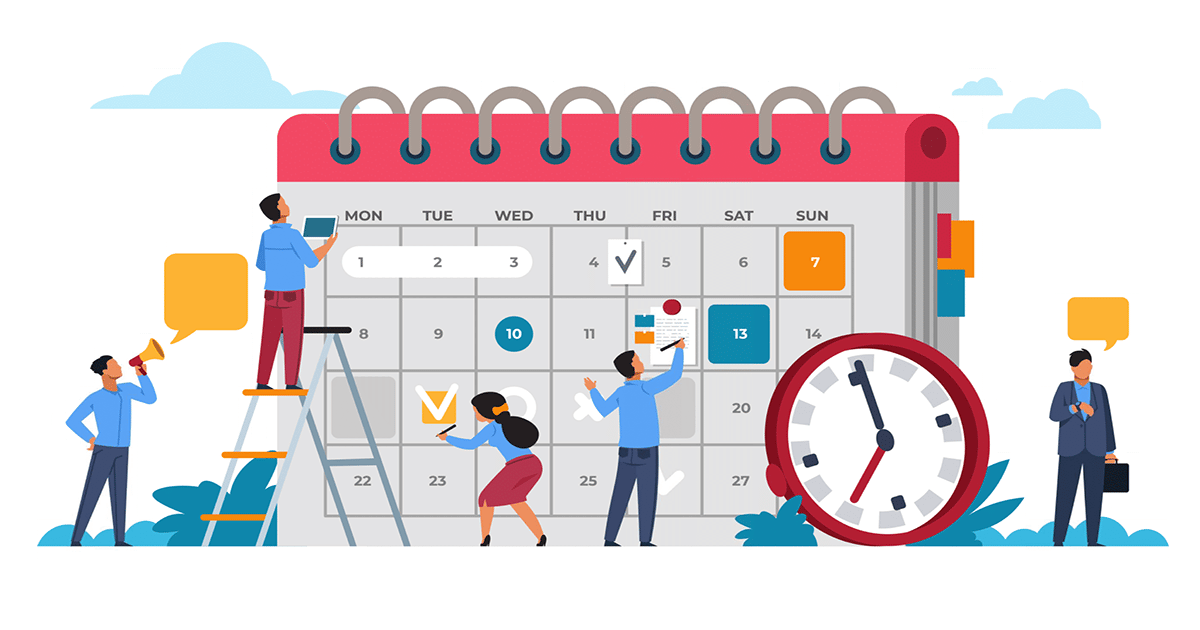It is always advantageous to manage your time well in a company, whether in the context of project management or on a personal level. However, it can be complex to keep track of tasks without the right tool. That’s why the best solution is to integrate a powerful project management tool into your workflow. By centralising your information, it will save you time and significantly increase your performance.
Definition of project management
All actions taken to optimally organize tasks over a given period are referred to as project management. The aim is to use human and financial resources as efficiently as possible to achieve the set objectives. Individual employees as well as teams may be affected by this time management.
A manager can implement a time management system to organise the time of all the employees within the team. Her or she must create a schedule and define the workload for each employee. The latter will ensure that work deadlines are met.
What types of project management are there?
There is no single method for managing workload and resource allocation. In fact, there are numerous approaches to dealing with various issues. Depending on the constraints and characteristics of your team, one of these methods may be appropriate.
Retro planning
This first method of monitoring planning is widely used in businesses. Its name derives from the fact that it begins from the project’s end date. The various tasks are then placed on the calendar in reverse order until the current date.
The advantage of reverse planning is that it guarantees that deadlines are met. As soon as the schedule is set up, you can judge whether the objectives can be achieved by the planned deadline.
The bar chart.
Also known as a Gantt chart, the bar chart is the one you should use if you want a visual representation. It takes the form of a diagram with an X and a Y axis. The tasks are thus represented on a time axis.
The Gantt chart is perfect for identifying the interdependencies that may exist between different tasks in a project.
Graphical planning
The graph schedule, also known as a PERT network, is the third most common type of schedule. This is a flow chart with the unique feature of representing tasks in a network. To represent the dependency of certain tasks, arrows are added between them.
If you decide to use a graph schedule, you can prioritise tasks more easily. You can also quickly understand which tasks can be done in parallel by your teams.
The advantages of good project management
A planning tool makes project management more efficient. You can keep an eye on the end objectives while working on tasks and therefore make better decisions on those tasks. Choosing the right project management solution can save time and improve team productivity.
Let’s discover the benefits of project management in more detail.
Centralise information.
The main advantage of project management software is that it centralises information. Instead of searching for different elements to organise the project, a single tool can give you access to the essential data via powerful dashboards.
You can then centralise all sorts of information, including staff holidays and availability, hours worked, absences, associated costs, etc.
Save time.
You give your team direct access to information by providing them with a project management tool. As a result, all employees have access to the tasks that must be completed and the deadlines that must be met at any time and from any location.
This saves valuable time, as each team member can become more independent. Everyone knows exactly what they must do and what is at stake.
Communicate effectively.
A planning tool is also an important component of effective human resource management. By allowing employees to know where the project is at all times, you encourage good communication and strong involvement among members.
Employees will be more motivated if they fully understand the project’s overall and specific issues.
Meeting deadlines
Finally, a project management tool is of course essential to deliver deliverables on time. Through allocating tasks and monitoring their completion over several weeks, you can improve the team’s performance and ensure that deadlines are met.
Which project management tool should I choose?
It is difficult to say which is the best tool or software for your project management. Depending on different parameters such as your budget, the size of the project or your information system, the tools can differ greatly.
However, we can identify four types of tools to help you manage your schedule:
- The shared calendar: This easy-to-use tool can be set up to plan, track and share the tasks to be carried out in your project. It is only suitable for small projects.
- Dashboards: These also allow tasks to be tracked, but go a step further, as it is possible to monitor the progress of the project using performance indicators.
- Planning tools: These are tools such as Gantt charts. These are ideal for accessing a visual representation of the project and improving employee involvement.
- Collaborative software: These are the most comprehensive tools. In addition to schedule management, teamwork software features can include messaging, video conferencing calls and even task automation.
By selecting the right management software, you will facilitate the work of your teams and save precious time. For this reason, such a tool is a must for successful collaborative work. By increasing group cohesion, improving employee autonomy and visibility of deadlines, you maximise your chances of achieving all your objectives.









